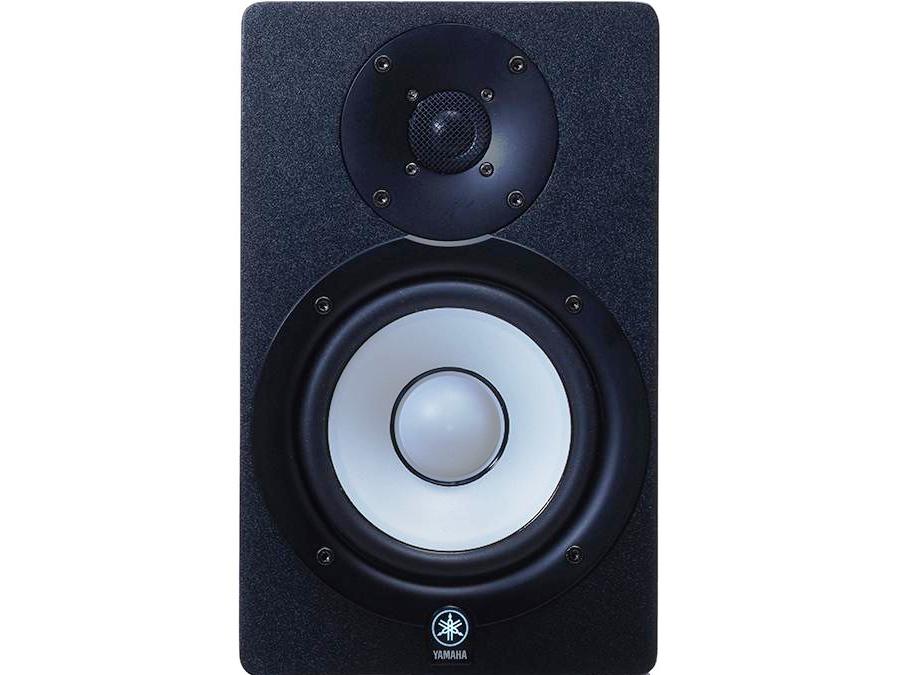The ultimate audio experience
Can you get recording studio quality at high street prices?

Some people get very excited when it comes to posh hi-fi gear. They rhapsodise about the sound of boutique systems. Specialist retailers all across the country have carefully prepared listening rooms in which exotic-looking speaker systems are arrayed, ready to attract the hi-fi buff's spending tokens.
However, if you go into a typical recording studio, you won't see polished wooden boxes, or much in the way of familiar hi-fi brands. The people producing the music we buy use audio monitors to listen to it, mixing the material to sound the best it can on speakers you rarely see in the home. And in some cases, those reference monitors cost less than the fancy home systems in which audiophiles invest.
Take, for example, the legendary Yamaha NS10. You could walk into pretty well any recording studio in the world and see a pair of NS10s sat on the meter bridge of the mixing console.
Producers favoured the NS10 because, if the music sounded good on these nearfield reference monitors, it'd sound good on pretty much anything. So why didn't people just buy NS10s for the home? It would surely give the listener a better chance of hearing the music as the producer intended it.
While the NS10 has been discontinued by Yamaha (although you can pick some up on eBay), one of its successors, the HS50M, can be had for around £220 a pair. And you don't even need to buy an amplifier because each cabinet has an amp built-in. Each HS50M is shielded against interference, supports balanced connections, has on-board EQ to cope with room characteristics and is rated at 70 Watts.
Is 'pro' the way to go?
There are numerous other makes of studio reference monitor and a few end up in a home-listening environment. Perhaps it's because they're not styled for good looks, or sweetened to flatter certain types of material. But if the music is being mixed and mastered on such devices, then is it a good idea to listen to it on them?
Liondubbs' Mike Prestwood-Smith is a film-sound professional and has worked on such movie hits as Casino Royale, Corpse Bride, Cold Mountain and Harry Potter. His studio is equipped with Dynaudio BM15A active nearfield monitors which, admittedly, would set you back around £1,600 a pair. But the manufacturer does produce far less expensive models. Mike points out, however, that using the same monitors as his won't guarantee you'll hear exactly what he heard when producing the audio.
Get daily insight, inspiration and deals in your inbox
Sign up for breaking news, reviews, opinion, top tech deals, and more.
"People always have an opinion on monitoring and that's because sound, like all our senses, is entirely subjective," he asserts. "What sounds and looks nice to one person may be totally different for someone else. If one person likes one set of monitors and another likes another, then so be it.
"If you want to hear a mix in exactly the same way that it was intended, then not only do you have to monitor on the same speakers, you have to monitor in the same room with the same acoustics and the same amp, and many other variables."
Once the audio is released from the studio, there's little one can do about the environments in which people hear it. And often, the material is done few favours, even in places where people should know better.
"As a film mixer," adds Mike, "I am consistently disappointed at the quality of theatre reproduction. Many cinemas are not calibrated or checked, and some have speakers turned off or blown. What I am saying is that there is always going to be an element of compromise in reproducing a mix because you are reproducing it on different gear. As long as it sounds good to you, then that's all that really counts."
Ask any audiophile and they'll tell you that the quality of home audio will always vary. It's something that we stress again and again, but when buying speakers arrange for a demonstration. Play the music you want to hear on them. You won't be able to recreate the precise conditions in which the audio was mastered, but if you arrive at a set-up that sounds good to you, regardless of looks or brand, then you're onto a winner.
Words by: Karl Foster
Tech.co.uk was the former name of TechRadar.com. Its staff were at the forefront of the digital publishing revolution, and spearheaded the move to bring consumer technology journalism to its natural home – online. Many of the current TechRadar staff started life a Tech.co.uk staff writer, covering everything from the emerging smartphone market to the evolving market of personal computers. Think of it as the building blocks of the TechRadar you love today.